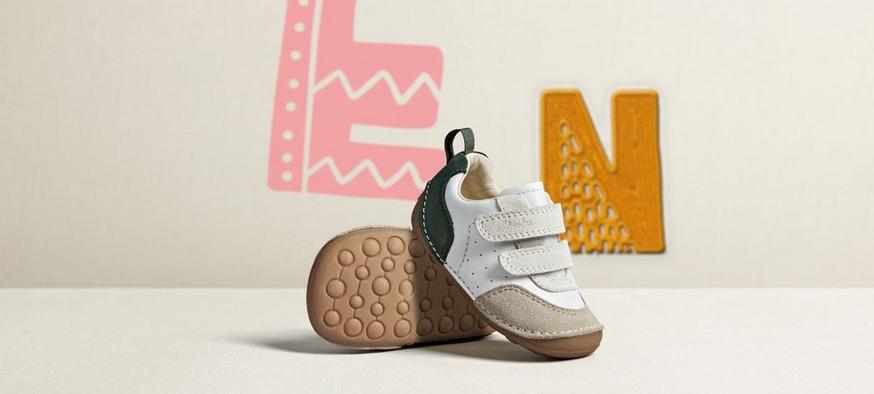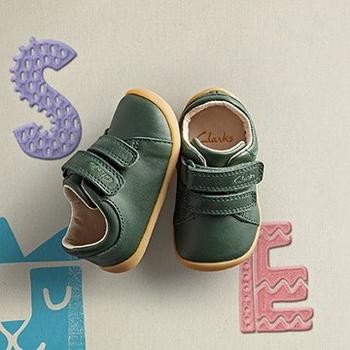First Steps: How to Help Your Baby Walk
Published on:
From that first adorable smile to your baby’s first real word, the first few years of your little one’s life are filled with so many oh-so-precious milestone moments. One of the most anticipated for all mums and dads has to be their baby’s first wobbly steps. Your baby learning to walk is a sign of growing and willingness to explore and is – quite literally – the first step towards your little one’s independence.
As a parent, it’s likely that you’re anticipating these exciting milestones (with your phone camera at the ready at all times, just in case) and preparing for their exciting arrival. While babies like to move at their own pace, there are plenty of things you can do to help your baby to walk. Read on to find out what these are…
When do babies start walking?
Your baby will likely take their first steps anywhere between 9-18 months. And, when they do, be prepared to chase the little rascals everywhere! Babies only learn to walk when the muscles in their feet are ready – that’s why a baby learning to walk is a gradual milestone they’ll achieve only when they’re ready.

What are the signs that a baby will walk soon?
The life of a parent isn’t short of excitement. It seems like every day our clever little ones are learning something new, and we couldn’t be more proud. Those first wobbly steps are a sign that toddlerhood is approaching—so get ready to babyproof your house! The three signs below aren’t the only indicators that your baby is starting to walk, but they’re certainly some of the more obvious ones. Has your baby hit any of these milestones yet? Take a look…
Crawling
From the adorable, army-style crawl to the hilarious bum scooting, crawling can be more than just the traditional hands-and-knees approach and is a sure sign that your baby is on their way to taking their first steps. With your help and support, your little one will begin to explore their surroundings more. They’ll find their own special method of working the room, and there’s guaranteed to be some precious photo and video opportunities along the way!
Pulling themselves up and standing on their own
As your baby becomes more of a daring adventurer, it won’t be long before they’ve figured out how to pull themselves up into a standing position. All that squatting and pulling up will soon boost their leg muscles and coordination, giving them the perfect preparation for walking.
Cruising
Nearly there now! Cruising is a very exciting stage, since it’s one of the closest you can possibly get to walking. A cruising baby can not only pull themselves up using objects and furniture, but they can also move around the room, using the furniture to help them as they go. Little cruisers may be able to stand without holding onto anything, but they don’t quite have the balance or confidence to take those first steps. It’s only a matter of time! Check out our guide to the cruising stage here to find out more about this important step.
How to encourage your baby to walk
Transitioning from cruising to walking can be helped by holding your baby’s hand and gradually letting go to show them they’re brave enough to stand by themselves. You can also kneel in front of your baby and tempt them forwards with their favourite toy or a mirror. Babies love nothing more than staring at their adorable reflections.
Should babies learn to walk with or without shoes?
Babies’ feet are soft and precious, so try to keep them protected with baby walking shoes that are comfortable and fit nice and snug. First shoes come in a range of styles, so it’s totally up to you whether you opt for an adorable pair of sandals or some casual and comfortable trainers.
When should I get my baby first walking shoes?
There’s nothing more exciting than buying clothes for your sweet mini-me. You can find baby shoes from tiny newborn sizes onwards, so it’s your choice when to add shoes to the wardrobe attire. Some parents choose to buy their baby’s first pair of shoes when they’re newly born, while others wait until their little one is more mobile. When your little one shows signs of walking, try offering some encouragement by treating them to their first pair of ‘big boy’ or ‘big girl’ shoes!
Best baby walking shoes
It’s best to look for shoes that are available in whole and half sizes and a variety of width fittings so that your baby’s tiny tootsies have the freedom to grow and develop. If your little one is beginning to take their first wobbly steps, then try to find shoes with a lightweight, flexible and non-slip sole to help them grip the floor.
Our collection of baby walking shoes come in a range of gorgeous colours and styles in premium materials that are soft against skin. Each design comes in whole and half sizes as well as different widths, so you’re guaranteed to get the perfect fit.


